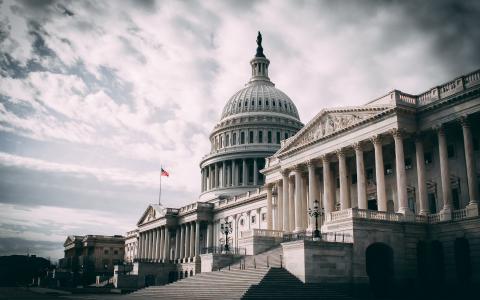
Over the weekend, President Trump said that House Speaker Nancy Pelosi (D-CA) reached out to him to “get together” and continue negotiations on the next stimulus package.
Negotiators did not meet over the weekend and, as it turns out, did not meet on Monday or Tuesday or even on Wednesday.
Instead of more negotiations, politicians are ramping up the political rhetoric and blaming the other side for delays. In remarks on the Senate floor on Monday, Senate Leader Mitch McConnell (R-KY) said “This is not a Washington game. It’s a national crisis. It would serve the nation better if the Democratic leaders would act like it’s a crisis.”
The Hill reported that Speaker Pelosi and Treasury Secretary Mnuchin spoke by phone on Wednesday but made no progress.
In a joint statement yesterday, Speaker Pelosi and Senator Chuck Schumer (D-NY) said that “We have again made clear to the Administration that we are willing to resume negotiations once they start to take this process seriously. The lives and livelihoods of the American people as well as the life of our democracy are at stake.”
The total cost is one of the biggest sticking points preventing a resolution. Democrats have already offered to lower the price to a total of around $2 trillion, down from the estimated $3 trillion price tag of the Heroes Act, but even that was too costly for the White House. Last Friday, Mnuchin said even that price was a “non-starter.”
Today, Speaker Pelosi reiterated that they have no plans to meet unless the White House agrees to spend at least $2 trillion. When asked when she’d meet with Republicans on the stimulus package, Speaker Pelosi said "I don’t know. When they come in with $2 trillion."
Many lawmakers have now returned to home and it’s largely expected that the Senate will recess until Labor Day while the House will return in mid-September. They can be called back to Washington for a vote though.
How Did We Get Here?
The Democrat-majority House of Representatives passed the Heroes Act on May 15th, nearly three months ago, and the Republican-majority Senate took no action until very recently. Senator McConnell introduced the various parts of the Heals Act near the end of July - over two months after the House first took steps towards the next stimulus package.
The challenge in all this is that Senator McConnell can’t point the finger towards the twenty Republican senators who would not vote for any additional stimulus. He doesn’t have a majority vote to pass anything, which is why he needs the support of Democrat within the Senate to pass any stimulus bill.
As a result of the logjam, President Trump used executive action to try to implement parts of the stimulus package. These include federal unemployment benefits of $400 per week, a payroll tax deferral, student loan relief, and a moratorium on eviction proceedings.
As experts analyze the orders and predict how they will be implemented, it’s becoming increasingly likely that these will have a far more limited impact than the headlines imply.
For one example, the $400 per week unemployment benefit was structured as a $300 payment from the federal government and $100 from state governments. The federal government would pull funds from the Disaster Relief Fund but experts calculated that it may only last 5 weeks. States are already having budgeting shortfalls because of lowered tax revenues and may not even participate.
One piece of stimulus that was conspicuously absent was a second stimulus check.
Unfortunately, the President lacks the authority to issue a stimulus check and so if Americans are to get one, it must be passed into law by Congress.
What the Second Stimulus Check May Look Like
The second stimulus check is one of the least contentious issues in the next stimulus package.
The Heroes Act offered a $1,200 per person payment ($2,400 for joint filers) to those who earned less than $75,000 ($150,000 for joint filers) with a 5% phase-out for those earning more than the limit. This is the same as first stimulus check.
It also increased the amount for dependents to $1,200 and included all dependents, up to three per household. This is higher than what was offered in the first stimulus check.
The Heals Act offered the same base economic impact payment as the Heroes Act - $1,200 per person ($2,400 for joint filers) to Americans who earn less than $75,000 ($150,000 for joint filers) with a 5% phase-out for those earning more than the limit.
It would only add $500 for each dependent with no age restriction but also no limit on the number of dependents.
Both bills structured the payments as an advance on a refundable tax credit.
Given such similarities between the two proposals, it’s extremely likely that the next stimulus bill will include a check in these amounts. If I had to choose, I’d say that a stimulus check that matched the one in the Cares Act, with an adjustment to the definition of a qualifying dependent, is the one most likely to be included.
What’s Next?
Treasury Secretary Steven Mnuchin and White House Chief of Staff Mark Meadows must meet with Senator Schumer and Speaker Pelosi and reach a compromise or the next stimulus package will never be passed into law.
Without a new stimulus package, there’s no way that another stimulus check will be created.
One silver lining in all this is that if a stimulus check is signed into law, Mnuchin said that the Treasury could issue the payment in as soon as a week. The first stimulus check took much longer, 13 business days, and it sounds like the Treasury has improved its processes from the first check.
This article originally appeared on Forbes.



